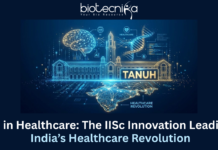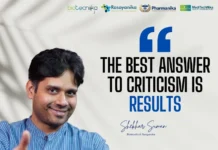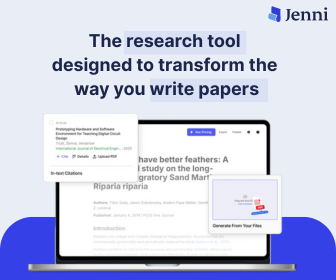AI & Genomics: The Billion-Dollar Biotech Revolution
Biotechnology is entering a new era, one where biology is no longer limited by microscopes or test tubes but propelled by data, code, and computation. At the forefront of this transformation is the explosive intersection of genomics and intelligent computational systems.
This isn’t just about innovation in labs, it’s about a rapidly expanding trillion-dollar opportunity that’s changing how we understand, treat, and even prevent disease. And yet, many are still unaware of the sheer scale and urgency of what’s unfolding.
In this article, we uncover:
- How much genomic data is actually being generated (hint: it dwarfs social media)
- The current limitations in making sense of this data
- How technology is enabling breakthroughs in precision medicine, drug discovery, and more
- Actionable strategies to help you build a future-ready biotech career
Let’s begin.
Just How Big Is Genomic Data?
To put things into perspective, consider this: the total data stored across platforms like YouTube, Facebook, Twitter, and NASA over the past 50 years—now multiply all of that by 10. That’s approximately the amount of genomic data being generated annually through sequencing.
These machines are producing terabytes of biological information daily, and current pipelines simply can’t keep up. This has created a critical bottleneck—and a massive opportunity for those who know how to bridge it.
The Bottleneck Becomes a Business Opportunity
As traditional methods fall short in processing today’s biological big data, a huge industry gap emerges, one that many estimate is worth not just billions but trillions.
Already, companies like Tempus, Deep Genomics, and DNA Nexus are transforming diagnostics and drug repurposing. What started as emerging names are now becoming foundational to the biotech ecosystem.
From $3 Billion to $200: The Sequencing Revolution
Twenty years ago, sequencing a single human genome cost around $3 billion. Today, it’s less than $200.
This dramatic reduction, driven by technological improvements and market competition, has turned personalized medicine into a realistic goal. Experts predict over 1 billion human genomes could be sequenced by 2030 triggering an unprecedented data surge.
Making Sense of the Data Tsunami
That tidal wave of data? It’s only useful if we know what to do with it. This is where computational tools are transforming genomics:
- Tailored treatment plans based on individual DNA
- More accurate and faster diagnostics
- Enhanced gene editing precision
- Rapid identification of drug targets
- Real-time population-level disease surveillance
Regulation, Ethics & Real-World Hurdles
While tools and technologies are advancing fast, regulation and ethics are lagging behind. From genomic data privacy to equitable access to new treatments—serious questions remain.
4 Key Pitfalls to Watch
-
Complacency: Professionals who don’t evolve risk falling behind. Upskilling is essential.
-
Debt Trap: International education must be pursued with financial caution—only when scholarships or strong funding is in place.
-
Geopolitical Risks: Visa rules and immigration policies can impact global career plans.
-
Salary Mismatch: Earning in INR while repaying loans in USD can be financially crippling.
A Rising Opportunity in India
India isn’t being left behind. With over 16,000 biotech startups and strong growth from companies like Biotecnika, Bayan, and Senjean, the opportunities are real and growing fast.
Success will favor those who are adaptive, skilled, and willing to think beyond traditional roles.
How to Gain the Edge?
You’ll need a T-shaped skillset:
-
Deep understanding of molecular biology, omics, and genetics
-
Broad exposure to:
-
Programming (Python, R)
-
Data analysis and statistics
-
Genomics tools (BLAST, NCBI, AlphaFold)
-
Cloud platforms (Google Colab, AWS)
-
Data visualization (Plotly, Seaborn, Excel)
-
️ 9 Smart Strategies to Stand Out:
- Develop your brand on LinkedIn
- Build a project-based digital portfolio
- Record a short video resume to showcase soft skills
- Contribute to open-source research tools or datasets
- Connect with mentors and domain experts
- Publish a student-level research or review paper
- Prioritize hands-on internships
- Combine technologies in new ways—e.g., genomics with AI
- Create a simple personal website with links to your work
Final Thoughts
The world is sequencing life at an incredible pace. Those who can read, interpret, and innovate with this data will shape the future of medicine and biology.
The question is, will you be one of them?
AI & Genomics: The Billion-Dollar Biotech Revolution – Latest Article

























I want to know about bioinformatics intership how I apply please contact 9399891748